Cracidae
Guans, Currasows, and Chachalacas
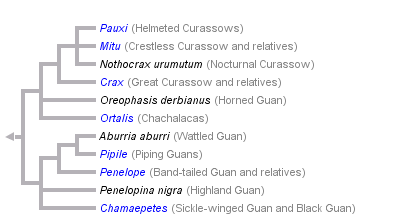


This tree diagram shows the relationships between several groups of organisms.
The root of the current tree connects the organisms featured in this tree to their containing group and the rest of the Tree of Life. The basal branching point in the tree represents the ancestor of the other groups in the tree. This ancestor diversified over time into several descendent subgroups, which are represented as internal nodes and terminal taxa to the right.

You can click on the root to travel down the Tree of Life all the way to the root of all Life, and you can click on the names of descendent subgroups to travel up the Tree of Life all the way to individual species.
For more information on ToL tree formatting, please see Interpreting the Tree or Classification. To learn more about phylogenetic trees, please visit our Phylogenetic Biology pages.
close boxReferences
Brooks, D.M. and S. D. Strahl. 2000. Curassows, guans and chachalacas. Status, survey and conservation action plans for cracids 2000–2004. IUCN/SSC Cracid Specialist Group. IUCN, Gland, Switzerland and Cambridge UK.
del Hoyo, J. 1992. Family Cracidae (Curassows & Guans). Pages 310-363 in Handbook of the Birds of the World. Vol. 2. New World Vultures to Guineafowl. J. del Hoyo, A. Elliott, and J. Sargatal, eds. BirdLife International and Lynx Editions, Cambridge, UK and Barcelona.
Delacour, J. and D. Amadon. 1973. Curassows and Related Birds. American Museum of Natural History, New York.
Ffrench, R., P. O’Neill and D.R. Eckelberry. 1991. A Guide to the Birds of Trinidad and Tobago (second ed.), Cornell University Press, Ithaca.
Frank-Hoeflich, K., L. F. Silveira, J. Estudillo-López, A. M. García-Koch, L. Ongay-Larios and D. Piñero. 2007. Increased taxon and character sampling reveals novel intergeneric relationships in the Cracidae (Aves: Galliformes). Journal of Zoological Systematics and Evolutionary Research 45(3):242–254.
Gill, F. and M. Wright. 2006. Birds of the World: Recommended English Names. Princeton NJ: Princeton University Press.
Grau, E. T., S. L. Pereira, L. F. Silveira, E. Höfling, and A. Wajntal. 2005. Molecular phylogenetics and biogeography of Neotropical piping guans (Aves: Galliformes): Pipile Bonaparte, 1856 is synonym of Aburria Reichenbach, 1853. Molecular Phylogenetics and Evolution 35(3):637-645.
Hilty, S. L. 2003. Birds of Venezuela. Christopher Helm, London.
Pereira, S. L. and A. J. Baker. 2004. A vicariant hypothesis for the speciation of curassows (Aves, Cracidae) based on mitocondrial DNA phylogeny. Auk 121:682–694.
Pereira, S. L., A. J. Baker, and A. Wajntal. 2002. Combined nuclear and mitochondial DNA sequences resolve generic relationships within the Cracidae (Galliformes, Aves). Systematic Biology 51(6):946-958.
Ridgely, R.S. and P.J. Greenfield. 2001. The Birds of Ecuador. Status, Distribution and Taxonomy. Cornell University Press, Ithaca.
Sick, H. 1993. Birds in Brazil. A Natural History. Princeton University Press, Princeton, New Jersey.
Strahl, S. D. , S. Beaujon, D.M. Brooks, A.J. Begazo, G. Sedaghatkish and F. Olmos, eds. 1997. The Cracidae—their Biology and Conservation. Hancock House, Blaine.
Vaurie, C. 1968. Taxonomy of the Cracidae. Bull. Am. Mus. Nat. Hist. 138:135–243.
Vuilleumier, F. 1965. Relationships and evolution within the Cracidae. Bull. Mus. Zool. 134:1–27.
Title Illustrations

| Scientific Name | Ortalis vetula |
|---|---|
| Location | Puerto Aventuras, Quinta Roo, Mexico |
| Specimen Condition | Live Specimen |
| Source | Chachalaca |
| Source Collection | Flickr |
| Image Use |
 This media file is licensed under the Creative Commons Attribution-NonCommercial License - Version 2.0. This media file is licensed under the Creative Commons Attribution-NonCommercial License - Version 2.0.
|
| Copyright | © 2006 Isidro Vila Verde |
| Scientific Name | Crax globulosa |
|---|---|
| Location | captive at Antwerpen Zoo, Belgium |
| Specimen Condition | Live Specimen |
| Source | olé |
| Source Collection | Flickr |
| Image Use |
 This media file is licensed under the Creative Commons Attribution License - Version 2.0. This media file is licensed under the Creative Commons Attribution License - Version 2.0.
|
| Copyright | © 2005 Frank Wouters |
| Scientific Name | Penelope jacquacu |
|---|---|
| Location | captive at Antwerpen Zoo, Belgium |
| Specimen Condition | Live Specimen |
| Source | Spix's Guan |
| Source Collection | Flickr |
| Image Use |
 This media file is licensed under the Creative Commons Attribution License - Version 2.0. This media file is licensed under the Creative Commons Attribution License - Version 2.0.
|
| Copyright | © 2006 Frank Wouters |
About This Page
Page copyright © 2007
 Page: Tree of Life
Cracidae. Guans, Currasows, and Chachalacas.
The TEXT of this page is licensed under the
Creative Commons Attribution-NonCommercial License - Version 3.0. Note that images and other media
featured on this page are each governed by their own license, and they may or may not be available
for reuse. Click on an image or a media link to access the media data window, which provides the
relevant licensing information. For the general terms and conditions of ToL material reuse and
redistribution, please see the Tree of Life Copyright
Policies.
Page: Tree of Life
Cracidae. Guans, Currasows, and Chachalacas.
The TEXT of this page is licensed under the
Creative Commons Attribution-NonCommercial License - Version 3.0. Note that images and other media
featured on this page are each governed by their own license, and they may or may not be available
for reuse. Click on an image or a media link to access the media data window, which provides the
relevant licensing information. For the general terms and conditions of ToL material reuse and
redistribution, please see the Tree of Life Copyright
Policies.
- First online 07 March 2007
- Content changed 07 March 2007
Citing this page:
Tree of Life Web Project. 2007. Cracidae. Guans, Currasows, and Chachalacas. Version 07 March 2007 (temporary). http://tolweb.org/Cracidae/26299/2007.03.07 in The Tree of Life Web Project, http://tolweb.org/




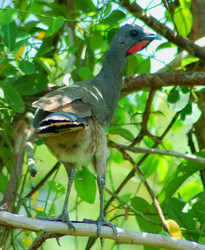
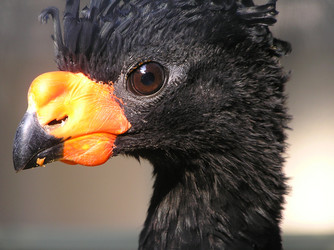
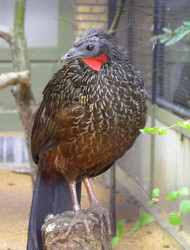

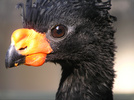


 Go to quick links
Go to quick search
Go to navigation for this section of the ToL site
Go to detailed links for the ToL site
Go to quick links
Go to quick search
Go to navigation for this section of the ToL site
Go to detailed links for the ToL site